 W
WField artillery is a category of mobile artillery used to support armies in the field. These weapons are specialized for mobility, tactical proficiency, short range, long range, and extremely long range target engagement.
 W
WThe 1.59-inch Breech-Loading Vickers Q.F. Gun, Mk II was a British light artillery piece designed during World War I. Originally intended for use in trench warfare, it was instead tested for air-to-air and air-to-ground use by aircraft. Although it fired shells and had no capability to launch rockets, it was widely but misleadingly known as the "Vickers-Crayford rocket gun."
 W
WThe 2A36 Giatsint-B is a Soviet/Russian towed 152 mm field gun which entered service in 1975. The 2A36 is designed to suppress and destroy enemy manpower and equipment. It is also suitable for counter-battery fire. The gun can be used in various weather conditions and has been tested in temperatures ranging from −50 °C to 50 °C. The gun is in use in Russia, a number of CIS countries, Finland, and Iraq. It was also used by the Lebanese Army to fire into the heavily fortified Nahr el-Bared refugee camp during the conflict there. Lebanon possibly acquired some in a major arms shipment from Iraq shortly before the end of the Lebanese Civil War.
 W
WThe 7 veld was a later Dutch designation of the Krupp 7.5 cm Model 1903 field gun.
 W
WThe 8.4 cm Feldgeschütz Ord 1871 is a 19th-century Swiss and Dutch field gun. The Dutch version was known as Kanon van 8 cm achterlaad. The Swiss version was replaced by the 8.4 cm Feldgeschütz Ord 1879. The Dutch version was replaced by the 8 cm staal.
 W
WThe 8.4 cm Feldgeschütz Ord 1879 is a 19th century Swiss field gun. It replaced the 8.4 cm Feldgeschütz Ord 1871. The difference was that the Ord 1879 had a barrel of steel instead of bronze. The steel barrel was made by Krupp in Essen, Germany. The carriage was made by the Eidgenössische Konstruktionswerkstätte in Thun.
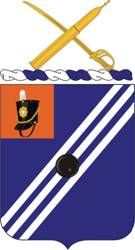 W
WThe 76th Field Artillery Regiment is a field artillery regiment of the United States Army. First formed as a cavalry regiment in 1916, the regiment was converted to field artillery in 1917, and served in Europe during World War I with the 3rd Division and as a separate battalion during World War II, as well as in peacetime at Fort Knox, KY, and Fort Devens, MA. Since 1959, the regiment has been a parent regiment under the Combat Arms Regimental System and the U.S. Army Regimental System, with regimental elements serving with the 3rd Infantry Division in Germany and Operation Iraqi Freedom, with the 7th Infantry Division in Korea, and in the Army Reserve. No regimental elements are currently active.
 W
W87-mm light field gun M1877 was a field gun utilized in Russo-Japanese War, World War I, Russian Civil War and a number of interwar period armed conflicts with participants from the former Russian Empire. The gun was initially developed by Krupp, but was also produced in the Russian Empire. Russian-manufactured pieces differed from the German-manufactured ones in breech type and construction elevation mechanism. The gun lacked recoil mechanism.
 W
W107-mm gun model 1910 was a Russian field gun developed in the years before the First World War. It also saw service during the Russian Civil War, Winter War and Second World War. The gun was initially developed and produced by the French arms manufacturer Schneider, but was later built by the Putilovski and Obukhov plants in Saint Petersburg.
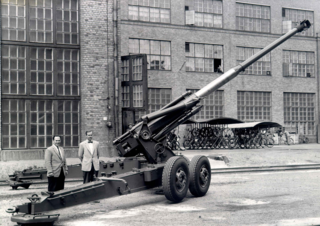 W
WThe 130 K 90-60 is a Finnish towed 130 mm coastal artillery piece, manufactured in the 1980s by Vammas.
 W
W152 H 88 is the name of a series of modernized 152 mm towed heavy howitzers with 32 caliber barrels. The guns of the series share the same barrel as well as other similar qualities, but differ slightly in appearance, since they consist of three different, older (modernized) versions. The modernization was carried out by Vammas Oy from 1988 to mid-1990s. The modernization project consisted of numerous modifications to the guns, some of which had already undergone earlier smaller modifications. The most important change was the replacement of the original barrels by a Finnish-made 152 mm barrel. Also the gun carriages were subjected to various modifications. After the modernization, increased towing speeds were made possible. The breech mechanism is manually operated in all the guns. All the 152 H 88 series artillery pieces are being withdrawn from service and scrapped.
 W
WThe 2A65 "Msta-B" is a Soviet towed 152.4 mm howitzer. The "B" in the designation is an abbreviation for Buksiruyemaya, which means towed. This weapon has been fielded in Soviet and Russian forces since at least 1987 and is currently in service with Russian front and army level artillery units. The 2A65 howitzer, like many pieces of Soviet artillery, is capable of firing nuclear artillery shells.
 W
WThe 155 GH 52 APU, Finnish designation 155 K 98, is a Finnish towed artillery piece developed in 1998. It is largely based on the 155 K 83 with some major enhancements. It can be moved on the field short distances with its own auxiliary diesel engine, which is used in all 56 units used by the Finnish defence forces, is a 78-kilowatt Deutz diesel engine. The Egyptian units are not equipped with the APU.
 W
WThe Tampella 155 K 83 is a Finnish towed 155 mm field gun, manufactured in the 1980s by Tampella.
 W
WThe 155 mm Creusot Long Tom was a French siege gun manufactured by Schneider et Cie in Le Creusot, France and used by the Boers in the Second Boer War as field guns.
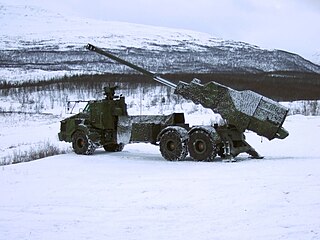 W
WThe Archer Artillery System, or Archer - FH77BW L52, or Artillerisystem 08 is an international project aimed at developing a next-generation self-propelled gun system for Sweden and Norway. The heart of the system is a fully automated 155 mm/L52 gun howitzer and a M151 Protector remote controlled weapon station mounted on a modified 6×6 chassis of the Volvo A30D, all-terrain articulated hauler. The crew and engine compartment is armoured and the cab is fitted with bullet and fragmentation- resistant windows. Aside from this, the system consists of an ammunition resupply vehicle, a support vehicle, and BONUS submunition and M982 Excalibur guided projectiles.
 W
WAn Armstrong gun was a uniquely designed type of rifled breech-loading field and heavy gun designed by Sir William Armstrong and manufactured in England beginning in 1855 by the Elswick Ordnance Company and the Royal Arsenal at Woolwich. Such guns involved a built-up gun construction system of a wrought-iron tube surrounded by a number of wrought-iron strengthening coils shrunk over the inner tube to keep it under compression.
 W
WThe Ordnance BL 5-inch howitzer was initially introduced to provide the Royal Field Artillery with continuing explosive shell capability following the decision to concentrate on shrapnel for field guns in the 1890s.
 W
WThe Ordnance BL 5.4-inch howitzer was a version of the British 5-inch howitzer designed for British Indian Army use, especially on the Northwest Frontier.
 W
WThe BL 7.2-inch howitzer was a heavy artillery piece used by the British Army throughout the Second World War.
 W
WThe 155mm L45 CALA 30 Gun is an Argentinian long range field artillery system developed for and in limited service with the Argentine Army.
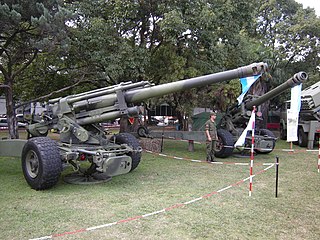 W
WThe 155mm L33 Argentine Model gun is an Argentinian artillery field gun in service with the Argentine Army.
 W
WThe Dhanush is a 155 mm towed howitzer used by the Indian Army. The gun was approved for service in 2019.
 W
WThe FH70 is a towed howitzer in use with several nations.
 W
WField Artillery is a discontinued bimonthly magazine on the subject of field artillery, published from 1911 to 2007. It was published by the US Field Artillery Association, Fort Sill, Oklahoma and was an official publication of the United States Army Field Artillery Corps. Its intended readership included active and reserve U.S. Army and Marine field artillerymen stationed around the world. In its final years, FA included much discussion of the military operations in both Afghanistan and Iraq.
 W
WThe Field Artillery Branch is a combat arms branch of the United States Army.
 W
WField artillery in the American Civil War refers to the artillery weapons, equipment, and practices used by the Artillery branch to support the infantry and cavalry forces in the field. It does not include siege artillery, use of artillery in fixed fortifications, or coastal or naval artillery. Nor does it include smaller, specialized artillery classified as small arms.
 W
WA field gun is a field artillery piece. Originally the term referred to smaller guns that could accompany a field army on the march, that when in combat could be moved about the battlefield in response to changing circumstances, as opposed to guns installed in a fort, or to siege cannons and mortars which are too large to be moved quickly, and would be used only in a prolonged siege.
 W
WThe G5 is a South African towed howitzer of 155 mm calibre developed in South Africa by Denel Land Systems. The G5 design was based on the Canadian GC-45 155mm gun which was highly modified to suit southern African conditions.
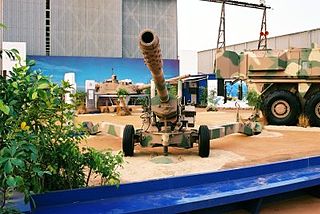 W
WThe G7 is a South African 105 mm howitzer, produced by Denel Land Systems (DLS). With a maximum range of 32 km (20 mi) it outranges all existing 105 mm howitzers, as well as most current 155 mm howitzers. During development, it was known as the Light Experimental Ordnance (LEO), with the G7 label being chosen later to fit in with Denel's two existing howitzer products, the G5 towed 155 mm howitzer and the G6 self-propelled 155 mm howitzer.
 W
WFälthaubits 77 or FH77 is a Swedish 155 mm howitzer. It was developed and manufactured by Bofors. It was available in two versions, the original with a 38 calibre barrel and sliding block mechanism, and the later FH77 B export version with a 39 calibre barrel and an interrupted screw breech.
 W
WJames rifle is a generic term to describe any artillery gun rifled to the James pattern for use in the American Civil War, as used in some period documentation. Charles T. James developed a rifled projectile and rifling system. Modern authorities such as Warren Ripley and James Hazlett have suggested that the term "James rifle" only properly applies to 3.8 in (97 mm) bore field artillery pieces rifled to fire James' projectiles. They contend that the term does not apply to smoothbores that were later rifled to take the James projectiles in 3.67 in (93 mm) caliber or other calibers, and that those should instead be referred to as "Rifled 6 pounder", etc.
 W
WThe L118 Light Gun is a 105 mm towed howitzer. It was originally produced for the British Army in the 1970s and has been widely exported since, including to the United States, where a modified version is known as the "M119 howitzer".
 W
WLong Tom is a generic name for some early age cannon and field guns, used both on land as at sea.
 W
WThe M119 howitzer is the US designation for the L118 light gun, a lightweight British 105 mm howitzer also used by the United States Army. It can be easily airlifted by helicopter, or dropped by parachute. It does not need a recoil pit.
 W
WThe M198 howitzer is a medium-sized, towed 155 mm artillery piece, developed for service with the United States Army and Marine Corps. It was commissioned to be a replacement for the WWII-era M114 155 mm howitzer. It was designed and prototyped at the Rock Island Arsenal in 1969 with firing tests beginning in 1970 and went into full production there in 1978. It entered service in 1979 and since then 1,600 units have been produced and put into operation.
 W
WNDL-40 is a towed multiple rocket launcher developed and produced by IPTN of Indonesia. The weapon system used 70mm rockets as projectile. The rocket used is produced by IPTN under license from Belgium.
 W
WThe Parrott rifle was a type of muzzle-loading rifled artillery weapon used extensively in the American Civil War.
 W
WThe Ordnance QF 2-pounder, or simply "2 pounder gun", was a 40 mm (1.575 in) British anti-tank and vehicle-mounted gun employed in the Second World War.
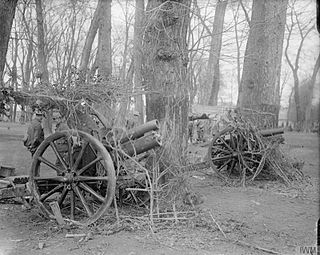 W
WThe Ordnance QF 4.5-inch howitzer was the standard British Empire field howitzer of the First World War era. It replaced the BL 5-inch howitzer and equipped some 25% of the field artillery. It entered service in 1910 and remained in service through the interwar period and was last used in the field by British forces in early 1942. It was generally horse drawn until mechanisation in the 1930s.
 W
WThe Armstrong Breech Loading 12 pounder 8 cwt, later known as RBL 12 pounder 8 cwt, was an early modern 3-inch rifled breech-loading field gun of 1859.
 W
WThe RML 9-pounder 8 cwt gun and the RML 9-pounder 6 cwt gun were British Rifled, Muzzle Loading (RML) field, horse and naval artillery guns manufactured in England in the 19th century, which fired a projectile weighing approximately 9 pounds (4.1 kg). "8 cwt" and "6 cwt" refers to the weight of the gun to differentiate it from other 9-pounder guns.
 W
WThe RML 13-pounder 8 cwt gun was a British Rifled, Muzzle Loading (RML) field artillery gun manufactured in England in the 19th century, which fired a projectile weighing approximately 13 pounds (5.9 kg). "8 cwt" refers to the weight of the gun.
 W
WThe RML 16-pounder 12 cwt gun was a British Rifled, Muzzle Loading (RML) field artillery gun manufactured in England in the 19th century, which fired a projectile weighing approximately 16 pounds (7.3 kg). "12 cwt" refers to the weight of the gun.
 W
WSylvanus Sawyer was a United States inventor.
 W
WIn the US system for land-based field artillery, the field artillery team is organized to direct and control indirect artillery fire on the battlefield.
 W
WThe 1.59-inch Breech-Loading Vickers Q.F. Gun, Mk II was a British light artillery piece designed during World War I. Originally intended for use in trench warfare, it was instead tested for air-to-air and air-to-ground use by aircraft. Although it fired shells and had no capability to launch rockets, it was widely but misleadingly known as the "Vickers-Crayford rocket gun."
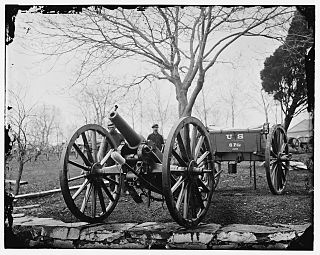 W
WThe Wiard rifle refers to several weapons invented by Norman Wiard, most commonly a semi-steel light artillery piece in six-pounder and twelve-pounder calibers. About 60 were manufactured between 1861 and 1862 during the American Civil War, at O'Donnell's Foundry, New York City: "although apparently excellent weapons, [they] do not seem to have been very popular". Wiard also designed a rifled steel version of the Dahlgren boat howitzer, among other gun types. Further, Wiard unsuccessfully attempted to develop a 15 in (381 mm) rifled gun for the US Navy and proposed a 20 in (510 mm) gun. In 1881 he unsuccessfully proposed various "combined rifle and smoothbore" weapon conversions of Rodman guns and Parrott rifles.